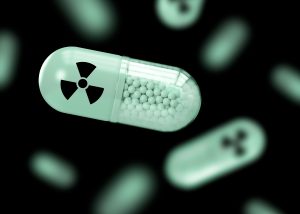Scientific Precision,
Natural Longevity
Our ingredients bridge science for a longevity revolution

Genomic Instability: DNA damage accumulation leads to dysfunctional cells,
gradually deteriorating tissues and organs.
Telomere Attrition: Telomeres, which protect chromosome ends,
shorten with age, ultimately leading to cellular demise.
Epigenetic Alterations: Changes in gene expression contribute to diseases like cancer,
neurodegeneration, metabolic syndrome-related pathologies, and bone conditions.
Loss of Proteostasis: Accumulation of misfolded proteins, reduced repair mechanisms,
and diminished protein clearance capacity lead to diseases such as ALS,
Alzheimer's, Parkinson's, and cataracts.
Disabled Macroautophagy: Decreased autophagy activity raises inflammation and cardiovascular,
metabolic, and neurodegenerative disease risks.
Deregulated Nutrient-Sensing: Nutrient sensitivity imbalance is linked to
metabolic diseases, inflammation, and autophagy inhibition.
Mitochondrial Dysfunction: Age-related mitochondrial deterioration triggers inflammation,
increased cell death, and reduced cellular activity.
Cellular Senescence: Excessive premature cell death and inefficient removal contribute to
a pro-inflammatory state and metabolic and neurodegenerative diseases.
Stem Cell Exhaustion: Declining regenerative capacity leads to tissue dead cells,
fostering a pro-inflammatory environment and disease development.
Altered Intercellular Communication: Age-related communication
breakdown between cells reduces neuronal, hormonal communication,
and increases inflammation, weakening the immune system.
Chronic Inflammation: Inflammaging, chronic inflammation with age,
promotes bone and arterial diseases, neurological issues, circadian
rhythm misalignment, and intestinal barrier dysfunction, weakening
the immune system.
Dysbiosis: With age, intestinal microbiota balance declines,weakening the
immune system and fostering metabolic diseases and other pathologies.
Unlocking Longevity
Tackling the12 hallmarks of aging
Chronological aging marks the time elapsed since birth, while biological aging is determined by molecular, cellular, and tissue changes occurring over the years, influenced by both internal and external factors. While we cannot halt the passage of time, we can slow down biological aging by addressing cellular changes.
What we do
What we are
Longevity focused
Backed by science
Cutting-edge products
News & Publications

Resveratrol or Pterostilbene? A review of two promising stilbenes
Stilbenes are phytochemicals, a subclass of polyphenolic compounds. They are naturally found in a wide variety of plant based dietary sources such as grapes, blueberries,

Improving Health Span: The Key to Longevity and Healthy Ageing
What is longevity? In demography, we define longevity as “length of life” or “life expectancy”. The most commonly used measure is “life expectancy at birth”, which considers

Radiation Impact on Health and Prevention of its Effects
What is ionizing radiation? Radiation can be classified according to its effect on matter. Normally, “radiation” refers to ionizing radiation[1], meaning the separation of electrons


